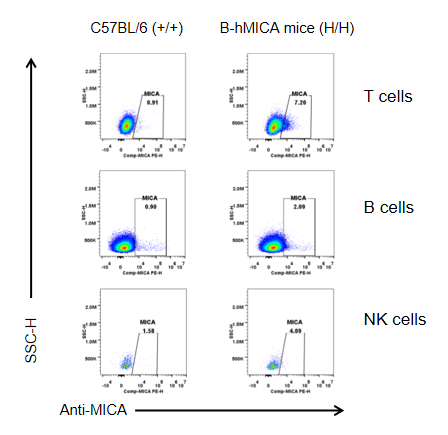
C57BL/6-Igs2tm1(MICA)Bcgen/Bcgen • 112161

Strain specific MICA expression analysis in wild-type C57BL/6 mice and homozygous humanized B-hMICA mice by flow cytometry. Splenocytes were collected from wild-type C57BL/6 mice (+/+) and homozygous B-hMICA mice (H/H), stimulated with PMA+ionomycin cocktail in vitro ( Cells were cultured in presence of PMA/I for 2 h, extensively washed, and subsequently cultured for up to 22 h) and analyzed by flow cytometry with species-specific MICA/MICB antibody. Human MICA was exclusively detectable on T cells, B cells and NK cells of homozygous B-hMICA mice.